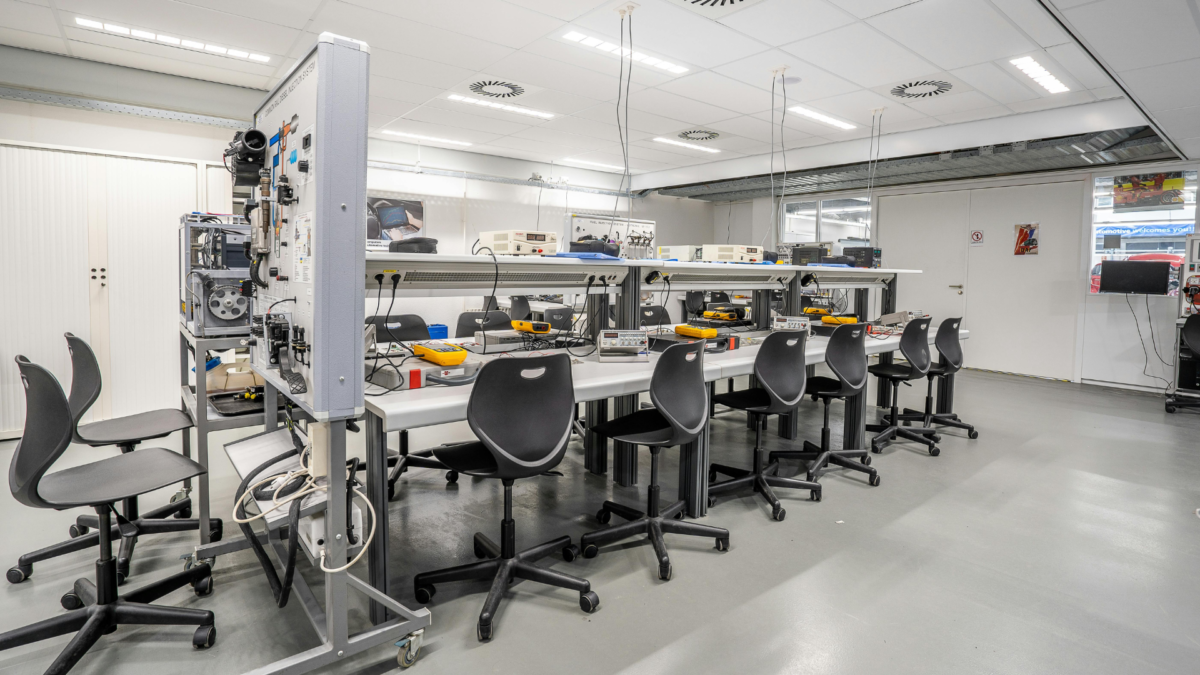The fashion industry is undergoing a remarkable transformation, driven by advancements in technology. Tech is revolutionizing how consumers shop and how brands design and produce clothing. From augmented reality experiences that allow customers to virtually try on outfits to the integration of artificial intelligence in trend forecasting, the industry’s landscape is evolving rapidly.
Wearable technology is also reshaping the fashion narrative, offering innovative products that blend style with functionality. Smart fabrics and devices not only enhance user experience but also promote sustainable practices by reducing waste in production. As these technologies continue to grow, they offer new pathways for creativity and efficiency in fashion.
For both designers and consumers, the intersection of fashion and technology presents exciting opportunities to redefine personal expression and style. The influence of technology in this realm extends beyond mere convenience; it fosters a deeper connection between the consumer and their clothing choices.
Innovation in Fashion Design and Production
Technological advancements are reshaping how fashion is designed and produced. These innovations allow for greater efficiency, creativity, and customization in the industry.
The Rise of Digital and 3D Design Tools
Digital design tools have transformed fashion design by offering advanced capabilities. Programs like Adobe Illustrator and CLO 3D allow designers to create intricate garments with precision. 3D design tools enable visualization of clothing in a virtual space. This leads to better decision-making in fabric choice, color scheme, and fit. Designers can produce detailed digital prototypes, minimizing waste before physical production begins.
Additionally, the integration of smart textiles is enhanced through these tools. Designers can visualize how fabrics will interact with technology, such as embedded sensors or responsive materials, facilitating innovative designs.
Automated and Robotic Production Processes
Automation and robotics are revolutionizing production lines in fashion. Robotic systems can handle tasks such as cutting fabric with high accuracy and speed. This reduces human error and increases production efficiency.
Automated sewing machines and assembly lines allow for faster turnaround times. They enable brands to keep pace with rapid fashion cycles while maintaining quality. Moreover, automation can adapt to varying production volumes. This flexibility helps brands respond swiftly to market demands while minimizing labor costs.
Integration of Generative AI in Fashion Creation
Generative AI is pushing boundaries in fashion design and production. This technology can analyze vast datasets to inform design choices, predicting trends and customer preferences accurately. AI algorithms assist in creating unique designs based on user inputs or market trends. This leads to personalized fashion pieces that cater to individual consumer tastes.
Additionally, AI contributes to optimizing production processes. It forecasts manufacturing needs, aligning resources more effectively and reducing excess inventory. The combination of these innovations transforms the fashion industry, driving it toward a more sustainable and consumer-focused future.
Evolving Fashion Marketing and E-Commerce
The intersection of technology and fashion marketing is transforming how brands engage with consumers. Key innovations such as data analytics and blockchain are paving the way for more efficient strategies and enhanced customer experiences in the fashion e-commerce space.
Data Analytics Driving Targeted Marketing Campaigns
Data analytics plays a pivotal role in modern fashion marketing. Brands can analyze consumer behavior, preferences, and purchasing patterns to tailor campaigns effectively.
- Customer Segmentation: This process divides consumers into distinct groups based on demographics, shopping habits, and preferences.
- Predictive Analytics: By leveraging historical data, brands can forecast trends and stock levels, reducing inventory costs.
These analytics tools enable targeted messaging that resonates with specific audiences, increasing engagement and conversion rates. Companies utilize platforms like Google Analytics and social media insights to refine their strategies continuously.
Blockchain and Intellectual Property in Fashion
Blockchain technology is revolutionizing how fashion brands manage intellectual property (IP) and supply chains. This decentralized system offers transparency and security, which are crucial in the fight against counterfeiting.
- IP Protection: Blockchain can verify the authenticity of a product. Each item can be traced back to its origin, ensuring that consumers receive genuine goods.
- Supply Chain Transparency: Brands can provide customers with detailed information regarding the manufacturing process, fostering trust and loyalty.
As a result, consumers are more informed and can make conscious purchasing decisions, knowing the product’s journey from creation to sale.
Amazon’s Influence on Fashion E-Commerce
Amazon has significantly impacted the fashion e-commerce landscape. The platform offers a vast selection and convenience, compelling brands to adapt their strategies.
- Marketplace Dynamics: Many fashion labels sell directly on Amazon, gaining access to a large customer base.
- Prime Membership Benefits: The allure of same-day and next-day delivery enhances customer satisfaction and encourages frequent purchases.
Fashion brands are increasingly investing in optimizing their presence on Amazon. This includes targeted advertising and participation in promotional events like Amazon Prime Day, which drive significant sales boosts.
Enhancing Customer Experience with Technology
Advancements in technology significantly improve customer experiences in the fashion industry. Tools such as augmented and virtual reality, alongside innovative try-on solutions, allow retailers to create more engaging and personalized shopping environments.
Augmented and Virtual Reality in Retail
Augmented reality (AR) and virtual reality (VR) have transformed how customers interact with fashion products. AR allows shoppers to visualize clothing on themselves through their smartphones or smart mirrors. This immersive experience helps customers make informed decisions without physically trying on items.
In contrast, VR can transport users to virtual stores, offering a unique shopping journey. Shoppers can browse collections in a fully digital environment. This enhances the sense of presence and can lead to higher customer satisfaction and engagement.
The Impact of Virtual Try-On Solutions
Virtual try-on solutions have gained popularity as effective tools for enhancing the shopping experience. These technologies use advanced algorithms and imaging techniques to allow customers to see how clothes fit on their virtual avatars.
Such applications reduce the uncertainty often associated with online shopping. Improved fit visualization means fewer returns and increased consumer confidence in purchases. Brands that implement these solutions often report higher conversion rates and greater customer loyalty.
Importance of Virtual Fitting Rooms and Wearable Tech
Virtual fitting rooms play a crucial role in redefining how consumers shop for clothes. They provide a seamless integration of technology, offering a digital space where customers can try on multiple outfits without physical limitations.
Wearable tech complements this shift by enabling personalized experiences. Smartwatches and fitness bands collect data on body measurements and preferences. This information allows retailers to suggest tailored options, enhancing the overall shopping experience and fostering customer loyalty.
Sustainability and Ethics in the Fashion Industry
The fashion industry faces increasing pressure to adopt sustainable and ethical practices. Key developments in sustainable fashion involve embracing the circular economy and addressing challenges in supply chains.
Sustainable Fashion and the Circular Economy
Sustainable fashion emphasizes reducing waste and resource consumption. The circular economy model promotes reusing and recycling materials, minimizing the environmental impact of clothing production. Brands are now designing products with their life cycle in mind.
This model drives innovations such as take-back schemes and leasing systems. For example, H&M and Zara have introduced programs to collect old garments, ensuring that materials can be reused or recycled. This approach helps decrease the demand for new resources, fostering a more sustainable future.
Challenges of Implementing Sustainable Practices
While there is a growing shift to sustainable practices, significant challenges remain. Cost remains a primary barrier, as eco-friendly materials often come with higher prices compared to conventional options. Brands may struggle to balance affordability with sustainability.
Moreover, supply chain complexity adds to the difficulty. Many companies source materials from multiple suppliers across various regions, making it hard to ensure ethical practices. Transparency in sourcing is crucial yet often lacking, leading to potential issues in labor practices and environmental standards.
Innovative Materials and Sustainable Supply Chains
The emergence of innovative materials is transforming the fashion landscape. Brands are exploring alternatives such as organic cotton, hemp, and recycled polyester. These materials reduce dependency on virgin resources and lower environmental impact.
Sustainable supply chains focus on ethical sourcing, aiming to improve labor conditions. Initiatives like certifications (e.g., Fair Trade, Global Organic Textile Standard) ensure responsible practices. Technology also plays a role; blockchain helps enhance traceability, making it easier for consumers to verify the origins of their clothes.
By prioritizing sustainability in materials and supply chains, the fashion industry can make meaningful strides towards ethical practices. These efforts contribute to long-term viability and consumer trust.










